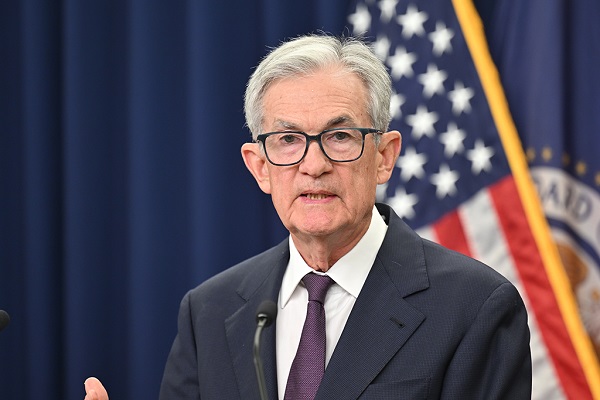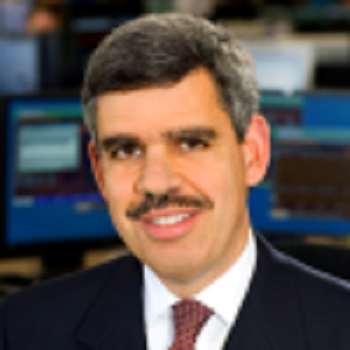.png)
As Growth Decouples From Employment, the Fed Faces a Trilemma
Absent an astute and judicious response, the Fed could see challenges to all three elements of its (explicit and implicit) objectives: inflation control, maximum employment, and financial stability.


By Mohamed A. El-Erian
Mohamed A. El-Erian, President of Queens’ College at the University of Cambridge, is a professor at the Wharton School of the University of Pennsylvania, the author of The Only Game in Town: Central Banks, Instability, and Avoiding the Next Collapse.
October 6, 2025 at 3:53 PM IST
I must have written at least four essays on the trade-off between unemployment and inflation during my undergraduate days. Back then, the focus was invariably on the Phillips curve – the postulated relationship between inflation and jobs – and its derivatives. The expectations-augmented Phillips curve, for example, recognized that current inflation dynamics are heavily affected by forecasts of future outcomes.
While not all economists fully accepted this notion, there was enough agreement about the basic trade-off to project, at least in the short run, that the lower the unemployment rate falls, the higher the rate of inflation will rise (and vice versa). The imperative to balance the two was formally captured in the “dual mandate” that Congress gave the US Federal Reserve (the world’s most powerful central bank) back in 1977. Thenceforth, the Fed’s task was to achieve both price stability and maximum employment.
Over time, however, the inflation-unemployment relationship has proved less stable and predictable than believed. For example, in the three years that followed this decade’s peak CPI (consumer price index) inflation, which topped 9% in 2022, US price growth slowed sharply, to around 3%, while the unemployment rate remained remarkably stable, at around 4% – a level widely considered to constitute “full employment” in the United States.
This configuration – resilient employment alongside rapid disinflation – came as a major surprise not only to a broad swath of economists but also to Fed Chair Jerome Powell. In August 2022, Powell had soberly warned of “some pain” ahead as the Fed hiked interest rates to counter the inflation it had mistakenly characterized as “transitory.” No less surprised were forecasters like Bloomberg Economics, which famously declared, in October 2022, that the probability of a recession in 2023 had hit 100%, owing to aggressive rate hikes by the Fed.
While the economy’s progress toward a “soft landing” was unequivocally good news, a new issue has appeared on the horizon, one that involves what is often seen as the Fed’s implicit third objective: financial stability. Intrigued by what seems to be a significant decoupling of US economic growth from the labor market, economists and Wall Street analysts are wondering what current trends will mean for the Fed’s interest-rate policy and overall financial conditions and stability.
Specifically, while GDP growth has remained robust this year, with the second quarter marking a two-year high, the labor market has been showing signs of weakening, and inflation has settled near 3%, stubbornly above the Fed’s 2% target.
This decoupling of growth and the labor market did not occur in a vacuum. Supply-side factors, such as the post-pandemic recovery in labor-force participation and record immigration inflows, played an important role in undermining the traditional Phillips curve in the first part of the 2020s. These developments have allowed the economy to run faster without overheating the job market and reigniting inflation.
Now, however, policymakers are facing a new conundrum: the economic engine remains powerful (as indicated by robust GDP growth), but job creation is falling. Again, many analysts cite supply-side factors, be it the US government’s crackdown on immigration or the promise of AI, deregulation, and other productivity-enhancing developments.
So far, markets have focused on the sunny side of this paradox. Investors expect that financial conditions will ease further as the Fed cuts rates to head off risks to employment. Even though inflation has been above target since March 2021, and is projected to remain elevated for two more years, the assumption is that stable long-term inflation expectations will reassure the Fed as it eases its policy stance.
This thinking is reflected in the record rally for equities, falling risk premia across many markets, and investors stretching ever further in search of returns, including in leveraged domains. We are witnessing not just historically rich valuations, but also a return to the kind of risk-taking that was so prevalent in the run-up to the 2008 global financial crisis.
But the market’s expectation that the Fed will cut rates in the midst of solid growth to head off a labor-market slowdown is itself creating a policy challenge for a central bank that is likely to be increasingly worried about further inflating asset prices and inadvertently fueling financial bubbles. It is a vexingly complex and uncomfortable challenge for an institution that has already made several mistakes in the last few years and is viewed as having fallen well behind on key internal reforms. In just the last two weeks, four senior Fed officials have spoken out about the need for operational changes, advocating a shift from a point estimate to a range for the inflation target, and opting for a different intermediate policy variable.
Absent an astute and judicious response, the Fed could see challenges to all three elements of its (explicit and implicit) objectives: inflation control, maximum employment, and financial stability. These difficulties could not come at a worse time for an institution that is already facing mounting political pressures.
© Project Syndicate 1995–2025



